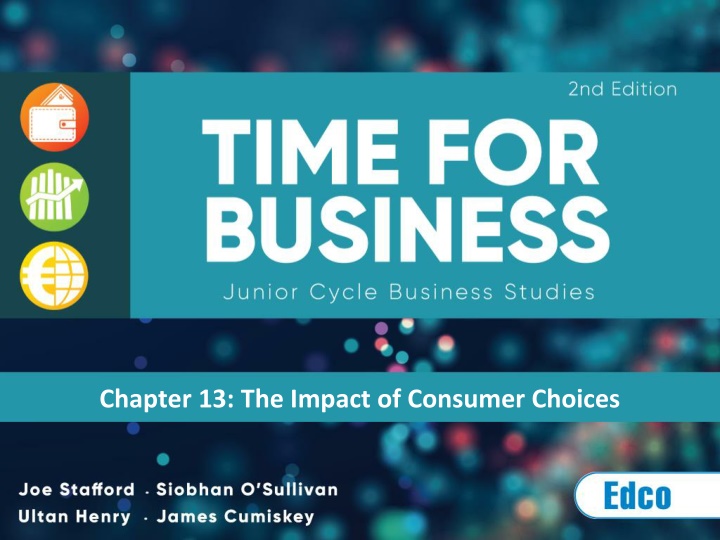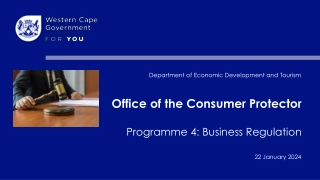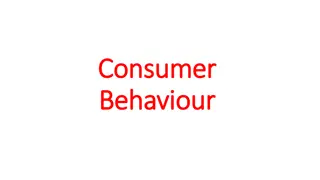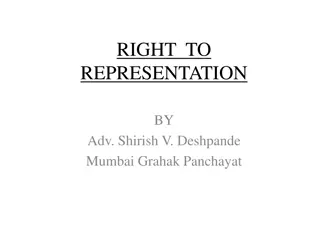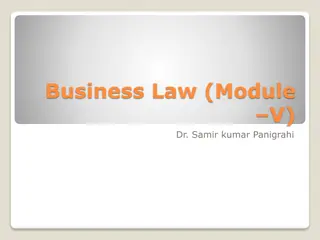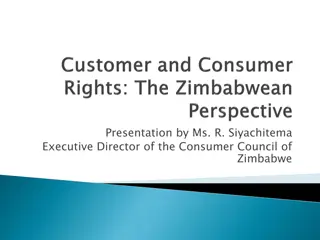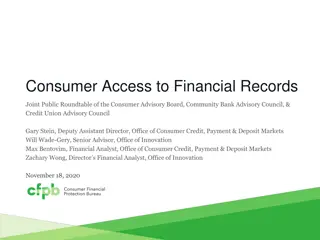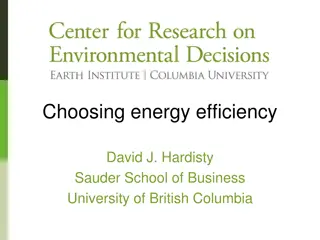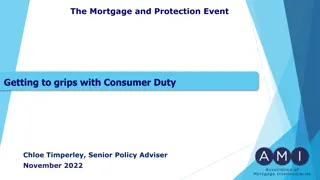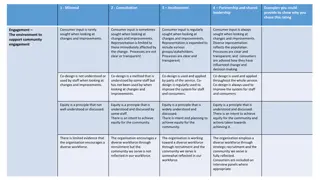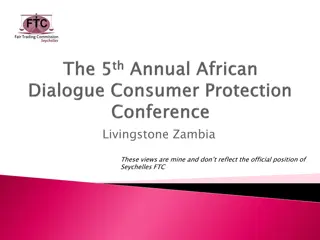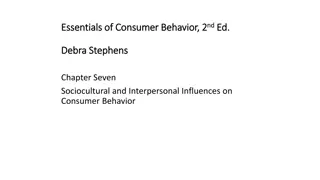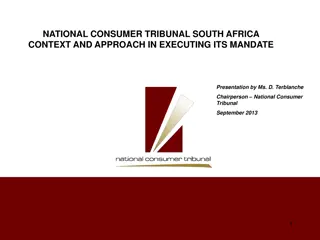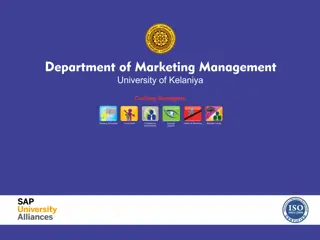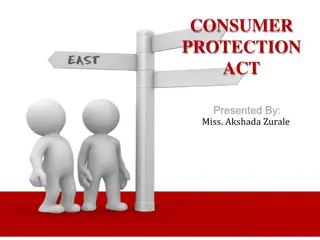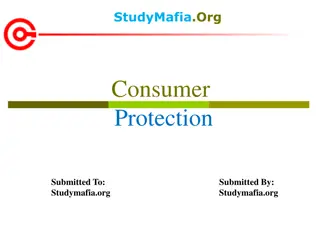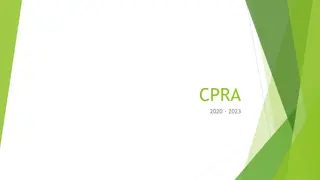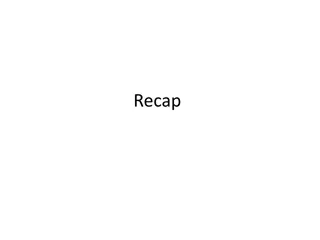Chapter 13: The Impact of Consumer Choices
Explore the role of consumers in the economy, the impact of consumer behavior locally and globally, ethical consumerism, sustainability, and the influence of consumer choices on goods and services. Dive into topics like consumerism, different types of resources, renewable and non-renewable resources, and how consumer decisions can shape the future.
Download Presentation

Please find below an Image/Link to download the presentation.
The content on the website is provided AS IS for your information and personal use only. It may not be sold, licensed, or shared on other websites without obtaining consent from the author.If you encounter any issues during the download, it is possible that the publisher has removed the file from their server.
You are allowed to download the files provided on this website for personal or commercial use, subject to the condition that they are used lawfully. All files are the property of their respective owners.
The content on the website is provided AS IS for your information and personal use only. It may not be sold, licensed, or shared on other websites without obtaining consent from the author.
E N D
Presentation Transcript
Chapter 13 Learning intentions In this chapter you will learn to: Appreciate the role of the consumer in the marketplace and the wider economy Examine the impact of consumer behaviour on others locally, nationally and globally Explore the ways in which consumer choices can influence the provision of goods and services, and how consumer power can change the lives of other people Explain what it means to be an ethical consumer Outline the concept of sustainability Debate the ethical and sustainability issues that arise from your consumption of goods and services Evaluate how you can contribute to sustainable development. Textbook page reference: 150
Chapter 13 Some BIG questions! Are you an informed consumer? What factors influence your decision to buy a product? Do you ever consider what goes into making the product? Are you concerned about whether the materials or the finished product are recyclable? Do you ever consider where the product comes from? What do you do with products when they no longer meet your needs? How would YOU answer these? Textbook page reference: 151
Chapter 13 Consumerism A desire to buy increasing amounts of goods and services. It assumes that owning more goods is a sign of wealth and success. Textbook page reference: 151
Chapter 13 Resources All goods and services require the use of different types of resources. Natural resources, e.g. water Human resources, e.g. workers Capital resources, e.g. buildings Financial resources, e.g. money. Textbook page reference: 152
Chapter 13 Non-renewable resources Non-renewable resources are limited in supply or cannot be replaced, e.g. fossil fuels such as coal, oil and natural gas. Textbook page reference: 153
Chapter 13 Renewable resources Renewable resources are not limited in supply, won t run out and can be regrown, reused or recycled, e.g. wind, sunlight and trees. Textbook page reference: 154
Chapter 13 Sustainable consumption Sustainability means using resources in a way that meets current needs but also preserves the resources for future generations. Textbook page reference: 154
Chapter 13 Sustainable development Sustainable development meets the needs of the present without undermining the ability of future generations to meet their needs. Textbook page reference: 154
Chapter 13 Sustainable consumption There are three core pillars of sustainability: Social people Environmental planet Economic profit. Textbook page reference: 155
Chapter 13 Sustainable consumption Sustainability involves carefully managing a resource in order to give it time to renew itself. For example, the fishing industry issues licences and also sets quotas (limits) on the amount of fish that can be caught each year. Textbook page reference: 155
Chapter 13 Sustainable consumption Sustainable consumption means buying goods and services that do not harm society, the environment or the economy in the long term. Textbook page reference: 155
Chapter 13 The growth and development of fair trade Fair trade means that farmers and workers in developing countries are paid a fair price for their products, e.g. coffee, bananas or cocoa. It means they have decent working conditions and fair terms of trade. Textbook page reference: 156
Chapter 13 The ethical consumer Ethical consumers only buy products that are produced in a fair and honest way. They avoid products that are known to harm or exploit other people or the natural environment. Textbook page reference: 157
Chapter 13 The ethical consumer Ethics and moral values refer to a person s ability to judge right from wrong. Textbook page reference: 157
Chapter 13 The ethical consumer Ethical consumers are concerned about the following major issues: Impacts on the environment Impacts on people Impacts on animals Sustainability Textbook page reference: 157
Chapter 13 The ethical consumer Ethical goods are produced in a way that is kind to the environment and also to the people who produce them. Textbook page reference: 158
Chapter 13 The ethical consumer A boycott is a voluntary act of protest in which consumers refuse to buy from or deal with a particular company. Textbook page reference: 158
Chapter 13 The impact of ethical consumerism Corporate social responsibility (CSR) is the duty of businesses to act in the best interests of all those who are affected by their activities, not just their owners. Textbook page reference: 159
Chapter 13 Triple bottom line Ethical and sustainable businesses look at the wider impact of their operations and decisions. They consider not only the profitability of their actions, but also the impact on society and the environment. This is known as the triple bottom line. Textbook page reference: 160
Chapter 13 Increased focus on green consumerism Green consumers force producers to take into account the impact of consumption on the environment. Textbook page reference: 160
Chapter 13 Increased awareness of our carbon footprint Your carbon footprint is an approximate measure of all the greenhouse gases emitted either directly by you or on your behalf. Textbook page reference: 160
Chapter 13 Fair labour-certified garments Brands that have this certification try to improve the pay and conditions of workers and tackle the global sweatshops where vulnerable employees are exploited. Textbook page reference: 161
Chapter 13 Fair labour-certified garments A sweatshop is a factory or workplace where workers are employed at very low wages for long hours and under poor conditions. Textbook page reference: 161
Chapter 13 Creative reuse Creative reuse, is a concept that encourages the public to reuse materials that would normally be thrown away in all kinds of inventive ways. Textbook page reference: 162
Chapter 13 United Nations Sustainable Development Goals These are global objectives that target hunger, poverty, education and environmental sustainability. Textbook page reference: 162
Chapter 13 What can you do? 1. Engage in life cycle thinking 2. Ask questions 3. Support sustainable businesses 4. Reduce, reuse and recycle 5. Consider end-of-life disposal 6. Shop local where possible Textbook page reference: 163 164
Chapter 13 Recap and review Can you: Appreciate the role of the consumer in the marketplace and the wider economy? Examine the impact of consumer behaviour on others locally, nationally and globally? Explore the ways in which consumer choices can influence the provision of goods and services, and how consumer power can change the lives of other people? Explain what it means to be an ethical consumer? Outline the concept of sustainability? Debate the ethical and sustainability issues that arise from your consumption of goods and services? Evaluate how you can contribute to sustainable development?
Chapter 13 Credit slide Shutterstock
